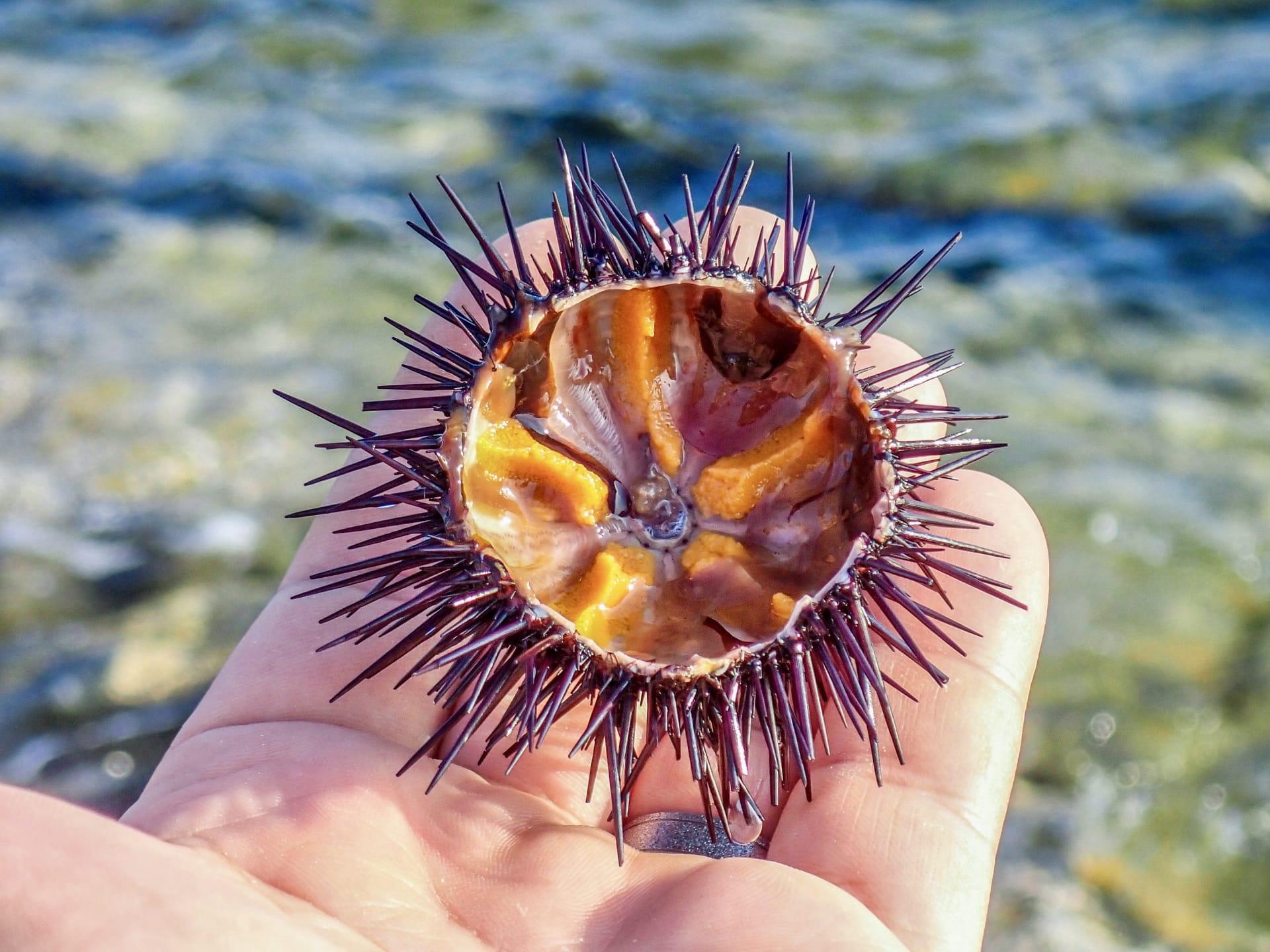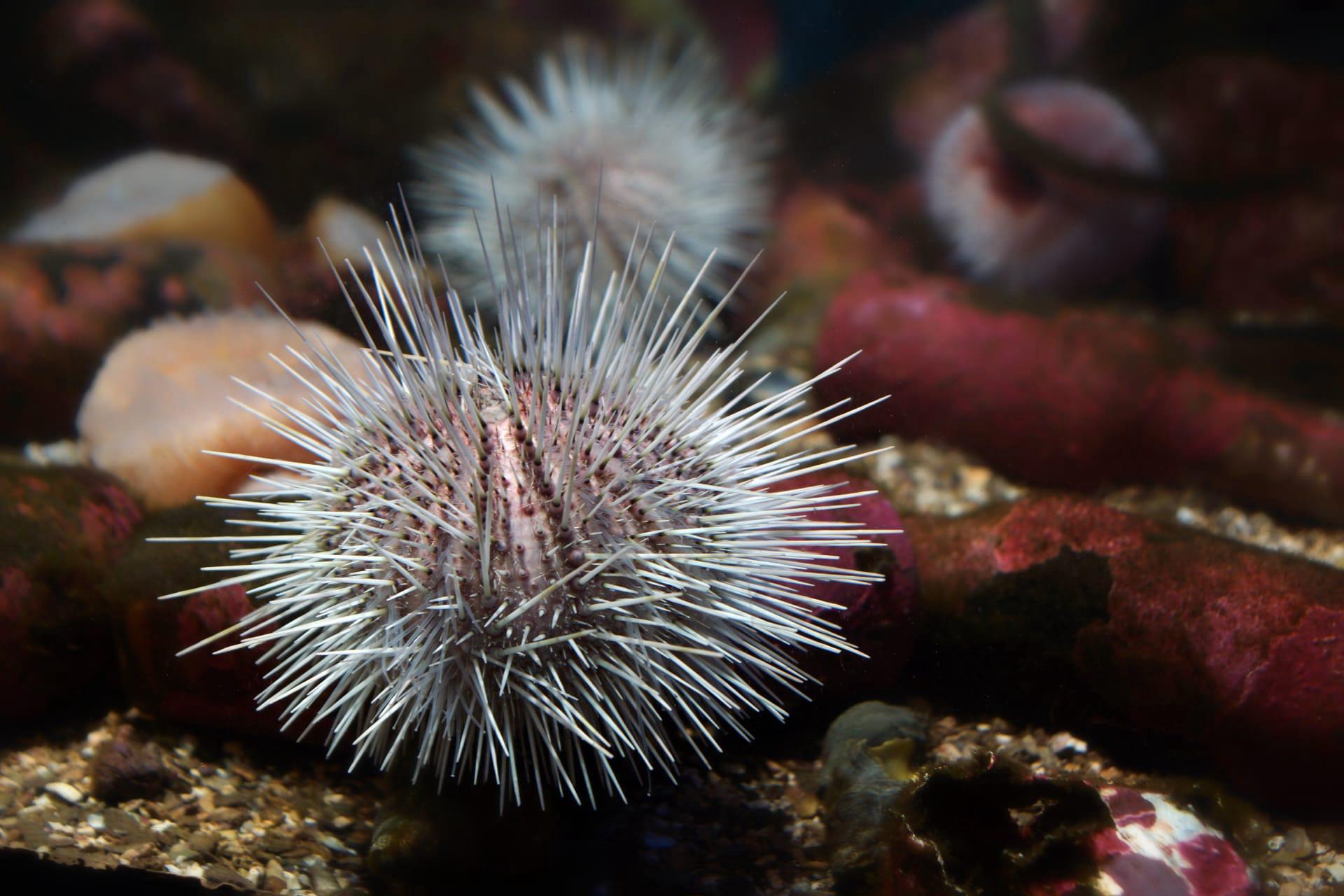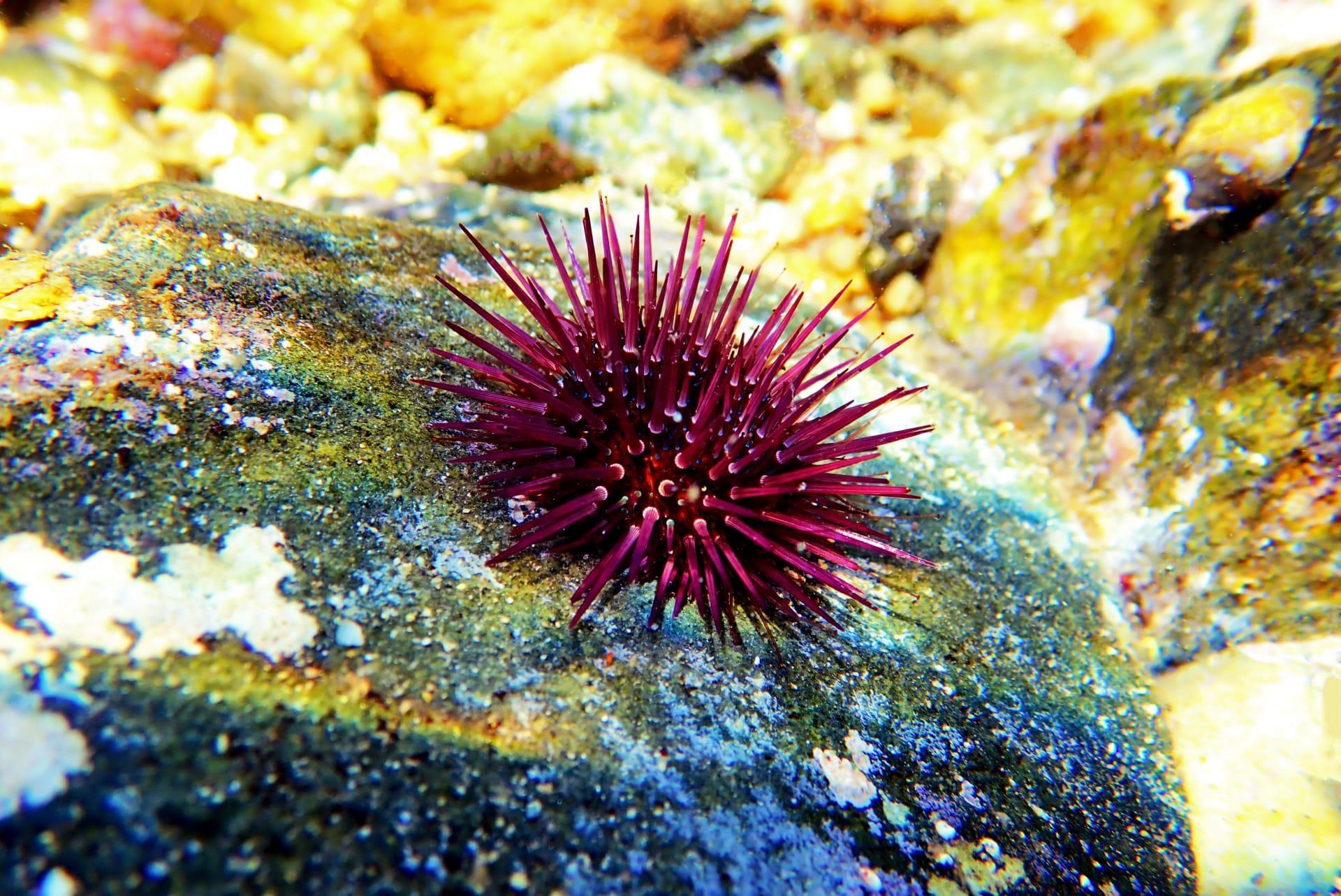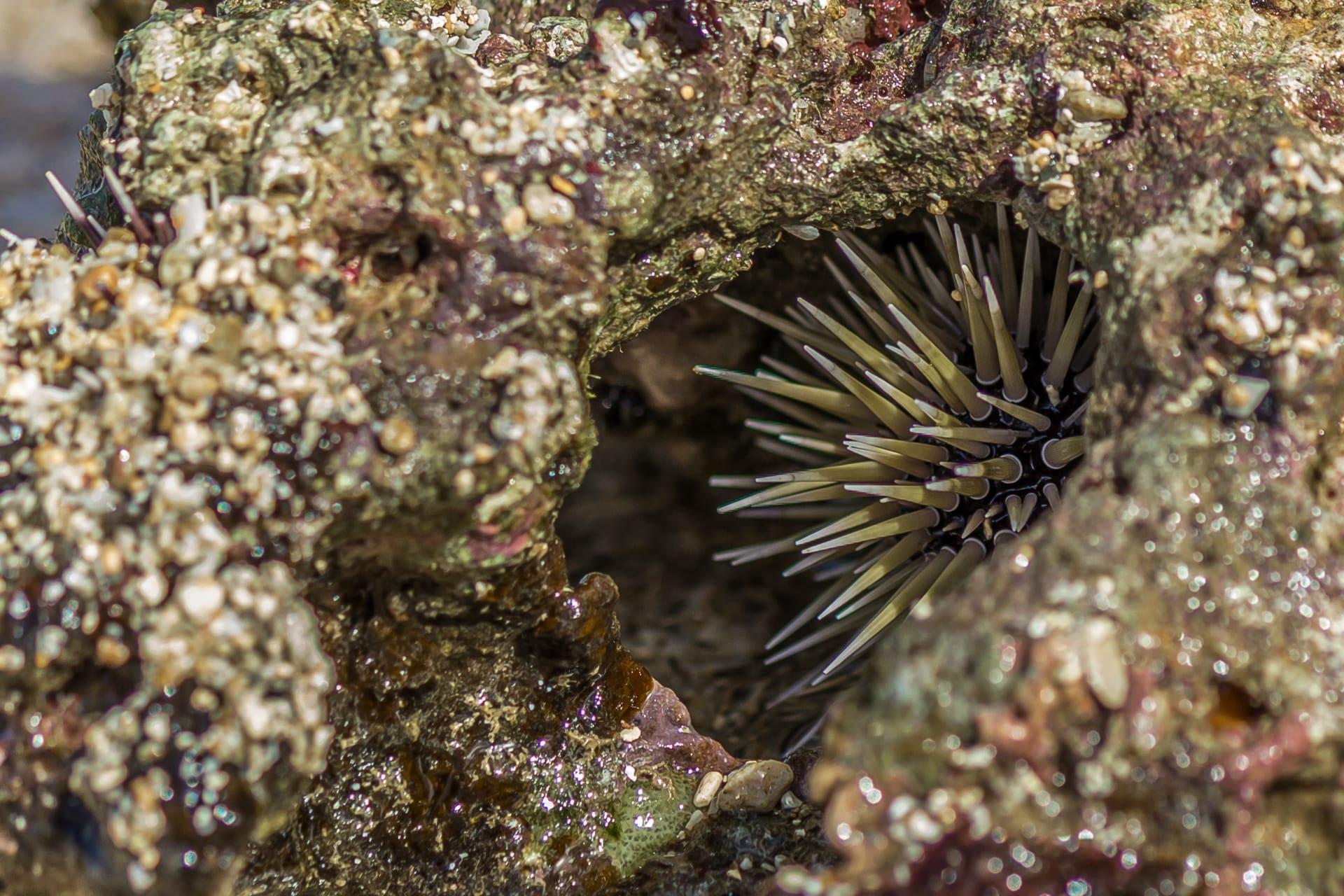Sea Urchin Characteristics
- Home /
- Mini Encyclopedia /
- Animal /
- Sea Urchin Characteristics
1
Sea urchins, intriguing marine creatures, typically measure about 2 to 4 inches in diameter, though the size can vary significantly across species. Their lifespan is equally remarkable, with some living up to 30 years. These spiny organisms have a hard, globular shell called a "test," covered with spines for protection and movement.
A distinctive organ of sea urchins is their "Aristotle's lantern," a complex, jaw-like mechanism. Comprising five calcareous plates, it enables the sea urchin to chew on a variety of foods, primarily algae. This organ, named after the philosopher Aristotle who first described it, plays a critical role in their feeding and survival.

2
Question: What determines the color of a sea urchin's spines?
Answer: The color of a sea urchin's spines, ranging from red to purple, green, and even black, is determined by pigments in their skin and diet. These colors can provide camouflage or warning signals to predators. Interestingly, the color may change as the sea urchin ages or changes its habitat, reflecting their adaptability in various environments.

3
Sea urchins move using a unique system of tube feet, which are part of their water vascular system. These tube feet extend from their shell and operate through hydraulic pressure, allowing them to cling to surfaces or move in a slow, deliberate manner. This movement is vital for feeding and avoiding predators.
As for feeding, sea urchins primarily graze on algae, making them important players in their ecosystems. They use their Aristotle's lantern to scrape algae off rocks. Their feeding habits can significantly influence the composition and structure of the seabed, showcasing their ecological importance.

4
Sea urchins inhabit a wide range of environments, from shallow coastal waters to deep ocean floors. They prefer rocky bottoms where they can find ample algae to feed on. These environments also provide crevices for hiding from predators, crucial for their survival.
In terms of reproduction, sea urchins have an interesting method. They release their eggs and sperm into the water (a process called spawning), where fertilization occurs externally. Timing is crucial; it usually happens when water conditions are optimal for the survival of their offspring, displaying a synchronized natural phenomenon.

5
Book: "Sea Urchins: Biology and Ecology" edited by John M. Lawrence, published in the USA, explores the fascinating world of sea urchins. The book, rich in scientific details, covers various aspects of sea urchin biology, ecology, and interactions with their environment. It's a comprehensive resource for understanding these unique marine creatures.
Book: "Echinodermata" by Maria Byrne, a renowned marine biologist, offers an in-depth look into the world of echinoderms, including sea urchins. Published in Australia, this book delves into the evolutionary biology, anatomy, and ecological roles of echinoderms, making it a valuable resource for marine science enthusiasts.